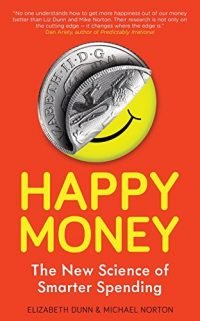Following a recent recommendation, I read Happy Money by Elizabeth Dunn and Michael Norton. The book explores the age-old question: can money buy happiness? The answer – in a nutshell – is yes, but it depends on how you spend it. According to the book which uses a mix of scientific studies and anecdotes to prove its point, things don’t make us happy but experiences and community do. Hardly anyone would argue with this conclusion, yet so many people don’t follow it in their own lives. Interestingly, this historic disconnect now seems to be converging. As evidenced by this book and several others, this topic is receiving more and more attention, which has the self-reinforcing effect of pushing it to the forefront of our consciousness and thus driving our behavior. As a millennial, I’d say we have latched on to this concept more than preceding generations (massive generalization).
The business implications are significant. Consumer preferences, housing and travel/commute patterns, as well as employee expectations and priorities are all rapidly changing in large part due to this trend. Whether you are running a consumer brand or a B2B software company, it makes sense to carefully consider how your business is aligned with this ethos, both internally (workplace culture) and externally (addressing customer desires).
Happy Money lays out five core principles for optimizing monetary spending for happiness. Below, I’ve included illustrative examples of how these principles could be applied in the business realm. To be clear, we are not giving blanket endorsement of these practices, but in the right circumstance they may have real merit. At the very least, they provoke good discussion.
| Happy Money Principle | Business Application | Business Case |
| Buy experiences | “Paid paid” vacation: Full Contact software literally pays employees on top of PTO. The only catch, you must go somewhere and can’t do any work or take work-related calls | Employee retention, productivity, creativity: Employees return rejuvenated and with a fresh outlook. Additionally, they develop trust in teammates to perform in their absence. |
| Buy time | Carvana is disrupting the auto sales industry by delivering on the simple premise of unmatched convenience (delivery to your door) and time saved (no trips between dealers) at a fair – if not slightly higher – price. | Strong product/consumer alignment, elevated price point: Consumers are willing to pay a small premium to avoid the unenjoyable aspects of car buying, effectively “buying” time |
| Make it a treat | Bucking the trend of content overload in the new world of over-the-top delivery (read: Netflix), HBO limits the number of projects it undertakes and still ‘drips’ one episode per week for new seasons. | Strong WOM, higher customer satisfaction: Abundance can be the enemy of enjoyment; by concentrating on fewer, but consistently high-quality projects and releasing them gradually, HBO can increase the perceived value… not to mention get everyone talking. |
| Buy now, consume later | Alinea restaurant in Chicago has upended the traditional post-facto payment standard by selling “tickets” for meals as far as 2-3 months in advance | Higher customer satisfaction, improved cash flow, strong WOM: Positive anticipation is a source of “free happiness” and drives word of mouth advertising; consumers leave with a good taste in their mouths (pun intended) as recency of consumption outweighs distant pain of paying |
| Invest in others | YourCause (former Vocap portfolio company) provides a flexible software platform that facilitates employee charitable giving, from disaster relief and seasonal campaigns to year-round corporate matching and peer to peer fundraising. | Employee retention, general brand affinity/goodwill: study after study proves that when done right, this type of benefit (e.g. corp. matching program) is more effective than cash bonus; employee control over giving is critical as this instills individual ownership of impact; employees engaged in corporate philanthropy are significantly less likely to leave their company compared to unengaged counterparts |
Whether you personally buy into these ideas or not, it is hard to deny that consumer and employee preferences and behavior are changing rapidly, and largely in alignment with “Happy Money” values (again, you can mostly thank Millennials… for better or worse). It would serve business leaders well to consider these principles and how they are positioning their businesses for success in this context.

